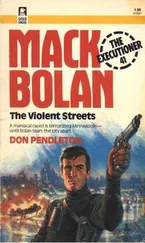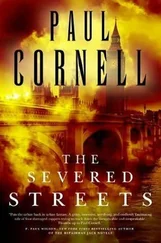The detective asks a few more questions, but there isn’t much you can do when a man answers everything put to him. As a measure of good faith, Garvey asks Frazier to bring in his.38 handgun.
“Carry it down here?” Frazier asks.
“Yeah. Just bring it in.”
“I’ll get a charge.”
“We won’t charge you with that. You got my word on it. Just make sure the gun’s unloaded and bring it down here so we can get a look at it.”
Reluctantly, Frazier agrees.
At the end of the interview, Garvey gathers up his notepaper and follows Frazier out into the hall. “All right, Frazier, thanks for coming down.”
The man nods, then holds the yellow visitor pass issued to him by building security. “What…”
“You just give that to the man at the booth on your way out of the garage.”
Garvey begins walking his witness toward the elevator, then stops near the water cooler. Almost as an afterthought, he leaves Frazier with something that is part warning and part threat.
“I’ll tell you, Frazier, if anything you’re saying isn’t right, now’s the time for you to deal with that,” Garvey says, looking impassively at the man. “Because if this is bullshit, it’s going to come back on you in a bad way.”
Frazier takes this in, then shakes his head. “Told you what I know.”
“All right, then,” says Garvey. “See you ’round.”
The man catches the detective’s eyes briefly, then turns down the corridor. His first few steps are short, uncertain movements, but those that follow gather speed and rhythm until he’s moving hip to shoulder, shoulder to hip, sailing forward in a full roll. By the time he clears the headquarters garage, Robert Frazier is once again ready for the street.
THURSDAY, MARCH 3
D’Addario turns page after page on a cluttered clipboard, his voice locked in the monotone of another morning’s roll call:
“… is wanted in connection with a homicide in Fairfax, Virginia. Anyone with information about the suspects or the vehicle should call the Fairfax department. Number is on the teletype.
“What’s next here?” says the lieutenant, scanning a fresh printout. “Oh yeah, we got another teletype from Florida… No… um, check that. It’s three weeks old.
“Okay, one last item here… As a result of the ISD inspection, I’m informed that you need to write down the number of the gas cards on your run sheets, even if the cards aren’t used.”
“What for?” asks Kincaid.
“They need the number of the gas card.”
“Why?”
“It’s policy.”
“Jesus, come on twenty-year pension,” cracks Kincaid, disgusted.
D’Addario breaks up the laughter. “Okay, the colonel would like to say a couple words to you all.”
Well, thinks every cop in the room, the shit must have really caught the fan. As CID commander, Dick Lanham rarely has call to address any particular unit on any particular case; God made captains and lieutenants and sergeants for that exact purpose. But a homicide clearance rate that is reaching new depths with every passing day is apparently enough to make even full colonels wince.
“I just wanted to say a few words to you all,” Lanham begins, looking around the room, “to let you know that I’ve got absolute confidence in this unit… I know that this has been a rough time for you people. In fact, the whole year has been rough, but that’s nothing new for this unit, and I don’t have any doubt that it will bounce back.”
As the detectives rustle uncomfortably and stare at their shoes, Lanham presses on with his pep talk, carefully straddling the fence between high praise and open acknowledgment of an ugly truth understood by everyone in the room: The Baltimore Police Department’s homicide unit is getting thumped.
Never mind the Latonya Wallace probe or, for that matter, the Monroe Street investigation, both of which are still as open as the days are long. At least in those cases, the department could say that it reacted properly, pouring men and overtime into the search for suspects, and Lanham, looking for silver linings, can’t help but bring that up.
“Anyone who knows anything about those investigations knows how hard they’ve been worked,” he tells the gathering.
And never mind the newspaper articles this morning, in which the NAACP, in a letter to the mayor’s office, has roundly criticized the Baltimore department for failing to curb racial abuses and-a charge unsupported by the evidence-for being slow to solve crimes involving black victims.
“I don’t want to tell you what I think about those allegations,” the colonel assures his detectives.
“But let’s face it,” he says, turning the corner, “the clearance rate is very low, and unless we get you all some help we’re going to have a hard time bringing it back up to where we want it. Particularly if we have another night like the last one… Most of all, we got to crack some of these goddamn killings of women in the Northwest.”
The room stirs uncomfortably.
“After talking with the captain, we’ve decided to bring in some extra men from around the sixth floor to work with the primary detectives on those cases… But I want you to understand that this is to help you in a rough time. Everyone has absolute confidence in the detectives assigned to those cases.
“At least,” says the colonel, trying to close on a positive note, “at least it’s not as bad as what’s going on in Washington.” Lanham then nods to D’Addario, who opens the floor to the robbery and sex offense supervisors.
“Is that it?” says D’Addario. “Lieutenant, you have anything to add? Joe?… All told.”
Roll call ends and the homicide unit’s dayshift breaks down into smaller clusters of detectives, some arguing and bartering for one of the Cavaliers, some heading for city court, some cracking jokes by the coffee machine. A day like any other, but every man on D’Addario’s shift now understands that things have scraped bottom.
The clearance rate-murders closed by arrest-is now 36 percent and falling, a statistic that doesn’t begin to explain the threat to Gary D’Addario’s tenure. The board that gave His Eminence reason for concern six weeks ago has continued to fill with open murders, and it is on D’Addario’s side of the wall that the names of the victims are writ in red. Of the twenty-five homicides handled by Dee’s three squads, only five are down; whereas Stanton’s shift has cleared ten of sixteen.
Of course, there are reasons for any statistical variation, but in the last analysis, the only fact that matters to the command staff is that Stanton’s detectives know who killed their victims; D’Addario’s men do not. There is no point in explaining that three fifths of D’Addario’s homicides happen to be drug-related, just as seven of those solved by Stanton’s shift are domestics or other arguments. Nor does it do any good to note that two or three case files were sacrificed to free men for the Latonya Wallace detail, or to point out that Dave Brown has a warrant out for one of the Milligan murders, while Garvey has a decent shot at clearing both the Lucas and Booker files.
All of that is commentary, and a Talmudic, murder-by-murder analysis of the board doesn’t mean a damn thing to anyone when it comes to the clearance rate. It is the unrepentant worship of statistics that forms the true orthodoxy of any modern police department. Captains become majors who become colonels who become deputies when the numbers stay sweet; the command staff backs up on itself like a bad stretch of sewer pipe when they don’t. Against that truth, which everyone above the rank of sergeant holds to be self-evident, D’Addario is in deep water-not only because his rate compares poorly to Stanton’s, but because it compares poorly to expectations.
Читать дальше












